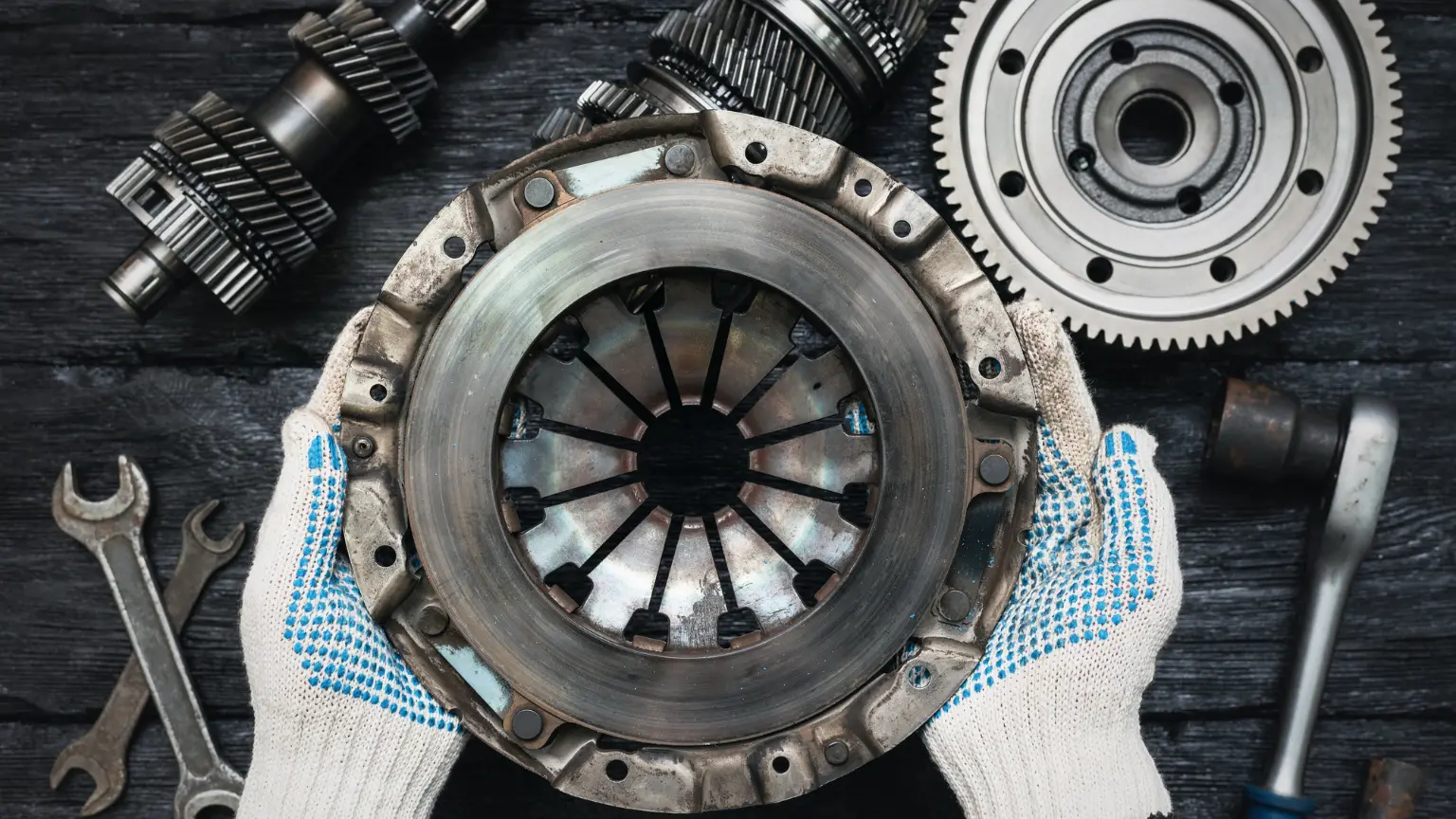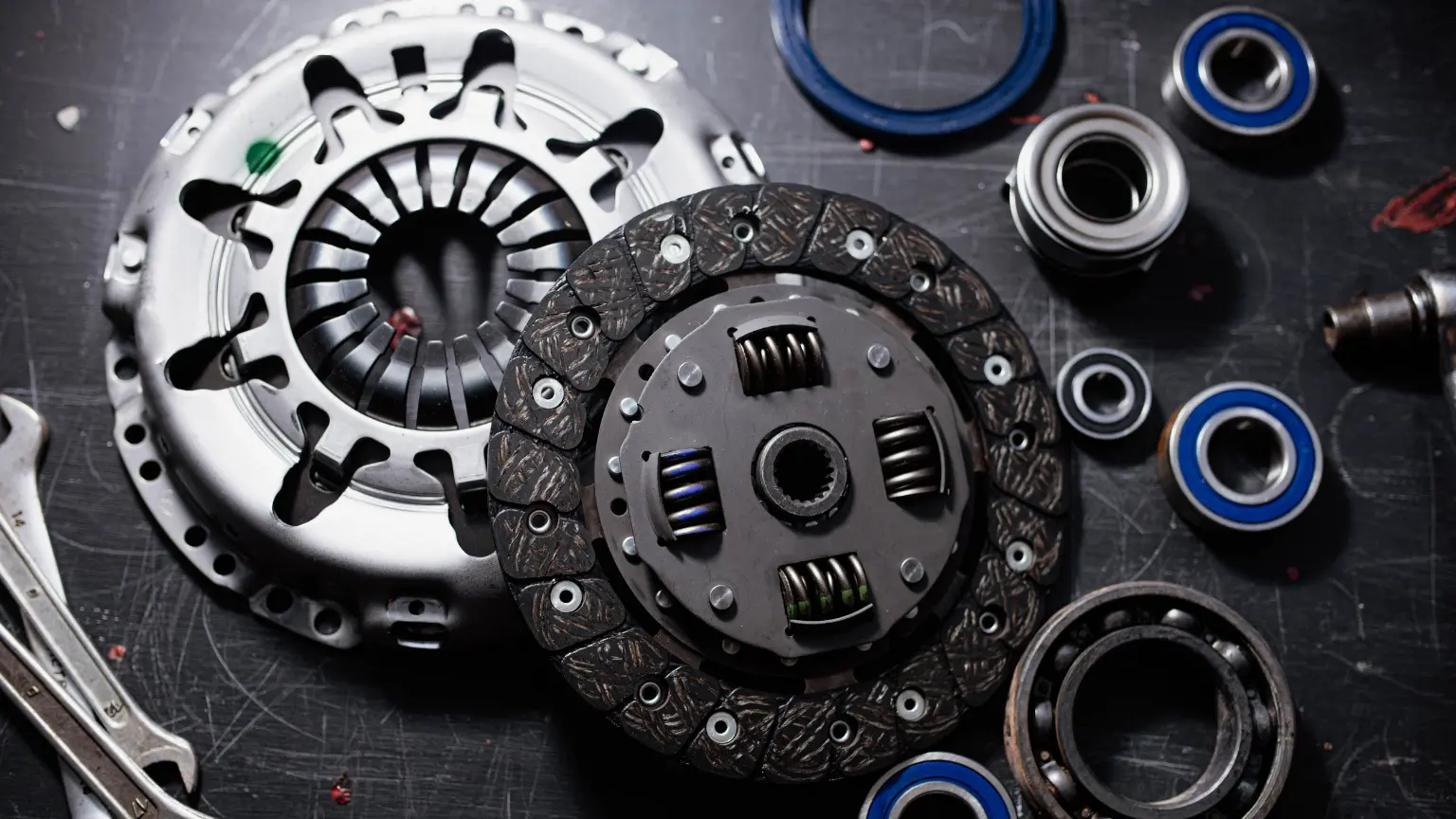Continuously Variable Transmissions (CVTs) in Modern Vehicles: A Comprehensive Guide
A CVT uses variable-diameter pulleys and a belt (or toroidal discs) to offer infinite gear ratios, keeping the engine at optimal RPM for seamless acceleration, better fuel economy, and smoother drives.
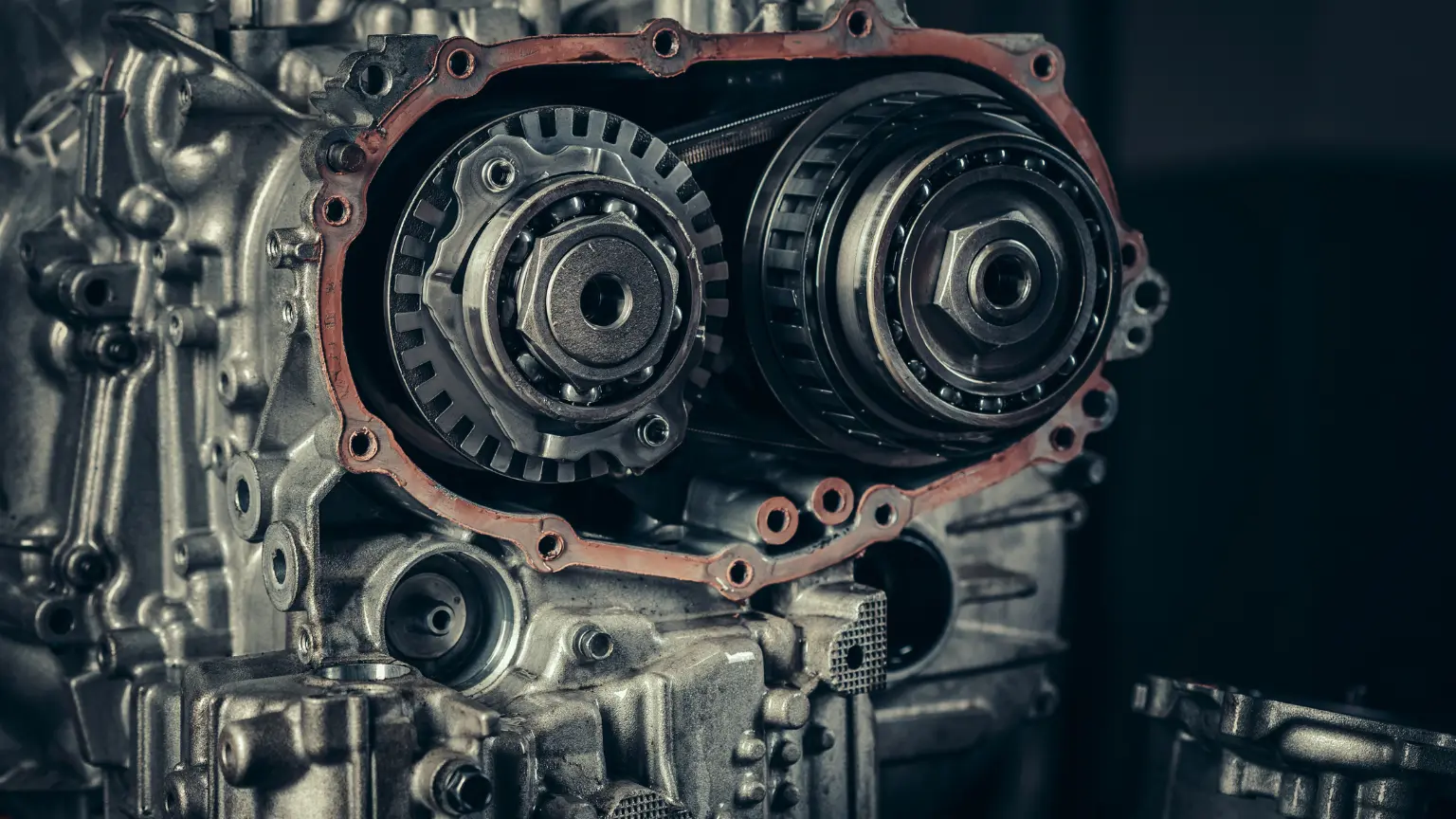
A Continuously Variable Transmission (CVT) is a type of automatic transmission that provides a seamless range of gear ratios. Unlike traditional transmissions with a fixed number of gears, CVTs offer infinite ratios between their highest and lowest settings, allowing the engine to operate at its most efficient RPM for a range of vehicle speeds. This flexibility enhances the driving experience with a CVT by maintaining consistent acceleration without the jerks or pauses experienced with conventional gear shifts.
How CVTs Work: A Closer Look at CVT Functionality
The Role of Pulleys and Belts
This setup includes two cone-shaped pulleys, one connected to the engine and the other to the drive wheels. The pulleys adjust their width based on the vehicle's speed and engine demands, allowing the belt to move at varying diameters. This mechanism ensures that the engine runs optimally, maintaining a consistent speed regardless of the vehicle's speed, which can significantly enhance the CVT for smooth driving experiences.
Eliminate Fixed Gear Ratios
CVTs operate on a principle that eliminates these fixed gear ratios. This allows a CVT to offer a seamless range of gear ratios that adjust continuously as you drive. The result is a smoother driving experience because there are no noticeable gear shifts. For drivers, this means no jerking or surging as seen with conventional automatics, leading to a more refined and enjoyable ride, especially in modern vehicles with CVTs.
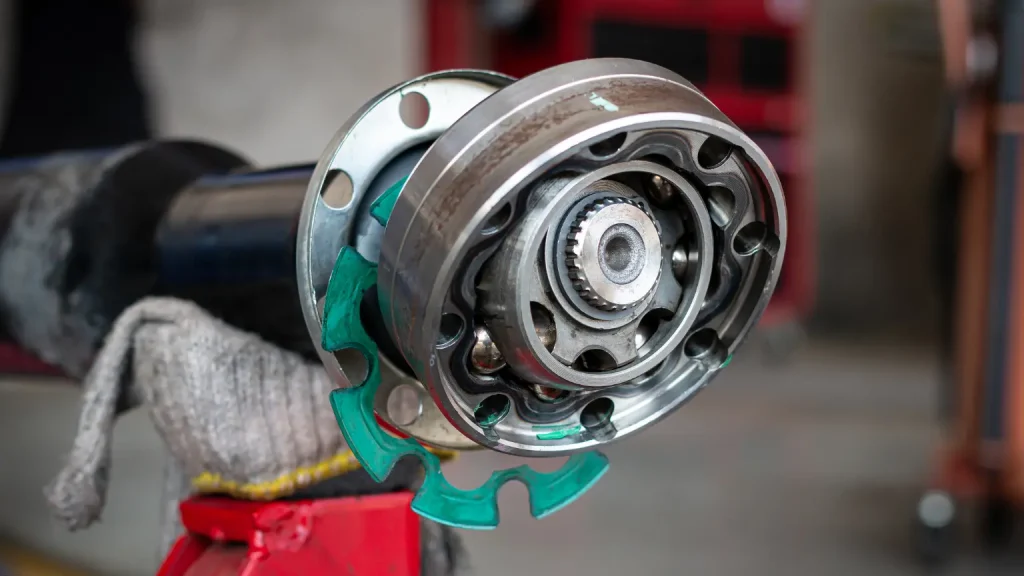
Smoother Driving Experiences
Designed to create a smoother driving experience by providing seamless transitions between speeds. Without the typical gearshifts of traditional systems, the acceleration process is smoother, making it feel as though the car glides from one speed to another. This characteristic is particularly advantageous in stop-and-go traffic, where frequent shifting can be cumbersome. The continuous variability ensures that the engine is always performing at its ideal speed, which contributes to the overall smooth driving experiences touted by CVT advocates.
Adapting to Driving Conditions
The adaptability of CVTs comes from their ability to change their gear ratios instantaneously to match driving conditions. This capability means that whether climbing a hill or accelerating on a freeway, the transmission can adjust to provide optimal power and efficiency at any moment. The CVT technology uses sensors to monitor factors like vehicle speed, engine load, and throttle position to determine the best ratio for the current conditions, helping to improve both the performance and fuel efficiency of CVTs.
Differences Between CVTs and Traditional Gear-Based Systems
Comparing CVTs vs. automatic transmissions, one can observe significant differences. Traditional transmissions use a fixed set of gears and provide power in increments, which can lead to drops in engine power during gear changes. CVTs, however, offer infinitely variable gear ratios which means the engine can maintain its power consistently. This not only enhances fuel economy but also improves the car's responsiveness. The absence of abrupt gear changes makes for a smoother ride, appealing to those who prioritize comfort and efficiency in their modern vehicles with CVTs.
Benefits of Continuously Variable Transmissions
Maximizing Engine Efficiency
The fuel efficiency of CVTs is a standout benefit, primarily due to their ability to keep the engine running within its most efficient RPM range, regardless of the car's speed. Efficiency results from the transmission's capability to continuously adjust to the engine's optimal performance point. Such functionality conserves fuel and reduces overall greenhouse gas emissions, making CVTs a more environmentally friendly option than traditional gear-based systems.
Contribute to a Relaxed Driving Experience
The overall impact of CVTs on the driving experience is significant, especially in terms of reducing driver fatigue and increasing comfort. The absence of noticeable gear shifts and the consistent power delivery allows for a relaxed driving atmosphere. Drivers can enjoy a quieter ride with fewer distractions from the transmission, which is particularly noticeable on long journeys where comfort becomes paramount. A relaxed experience is one of the primary reasons why many modern drivers prefer CVTs in cars.
Modern Vehicles with CVTs: Real-World Applications
CVTs in Hybrid Vehicles
Hybrid vehicles benefit immensely from CVTs, as these transmissions enhance the seamless integration of electric motor and combustion engine operations. In hybrids, CVTs work in modern vehicles to optimize the switch between electric and gasoline modes, improving overall energy efficiency. This supports smoother acceleration and deceleration, which is vital for maximizing the regenerative braking capabilities essential to hybrid systems.
CVTs in SUVs
In the realm of SUVs, CVTs provide the necessary torque and power handling needed for larger vehicles which often carry heavier loads. The ability of CVTs to adjust the power delivery dynamically makes them suitable for SUVs that require a robust performance, whether navigating city streets or tackling more rugged terrain. Maintaining performance and efficiency in vehicles that are often less fuel-efficient than smaller cars requires flexibility.
CVT Performance in Sports Cars
Though less common, some sports cars are now incorporating CVTs to explore the benefits of continuous power delivery without the interruption of gear shifts. However, CVT performance in sports cars poses unique challenges, such as maintaining the engaging driving feel enthusiasts expect. Manufacturers are addressing these challenges by developing CVTs with 'simulated' gear shifts and enhanced power handling capabilities to combine efficiency with a sporty driving experience.
Vehicles with the Best CVT Systems
Several automakers are renowned for their advanced CVT systems that offer superior efficiency and driving comfort. Notable among these are Nissan, with their Xtronic CVT, and Subaru with their Lineartronic CVT. Both brands have received accolades for integrating CVT systems that deliver enhanced performance and reliability. Honda also stands out with its CVTs, particularly in models like the Civic and Accord, where the transmissions provide an excellent balance of performance and fuel economy.
Exploring the Advantages
In today's automotive landscape, CVTs are not just a novel technology but have become a pivotal feature in modern vehicles, bridging the gap between performance, efficiency, and environmental responsibility. Here are key points illustrating their real-world applications:
- Enhanced Fuel Efficiency – Unlike traditional transmissions, which rely on set gear ratios, a CVT continuously adjusts to maintain the most efficient engine speed for any given driving condition. This reduces unnecessary fuel consumption, especially during city driving, where frequent stops and starts can impact mileage. Additionally, because CVTs eliminate the need for gear hunting, they minimize energy loss, allowing vehicles to achieve better miles per gallon (MPG) compared to conventional automatic transmissions. Many hybrid vehicles utilize CVTs to maximize energy efficiency by ensuring the engine operates at its most economical RPM range. As fuel prices fluctuate and environmental concerns grow, the ability of CVTs to enhance fuel efficiency makes them a preferred choice for both drivers and manufacturers.
- Adaptability – Whether tackling steep inclines, navigating congested urban streets, or maintaining speed on highways, a CVT automatically adjusts to provide optimal power and torque distribution. This eliminates the need for manual downshifting or gear changes, allowing drivers to focus on the road without worrying about transmission performance. Also, CVTs are particularly effective in hybrid and all-wheel-drive vehicles, where precise power delivery is essential for maximizing efficiency and performance. In mountainous regions, where traditional transmissions may struggle with maintaining power at the right moment, CVTs excel by continuously adjusting the power ratio to ensure smooth climbing. Their ability to respond dynamically to driving conditions makes CVTs a preferred option for vehicles designed for both city commuting and long-distance travel.
- Low Maintenance Needs – Compared to traditional transmissions, which contain multiple gears, clutches, and complex hydraulic components, CVTs have fewer moving parts, reducing the likelihood of mechanical failures. Because they rely on a system of pulleys and belts instead of fixed gears, CVTs experience less wear and tear over time. This translates to lower maintenance costs and reduced downtime for vehicle owners. CVTs do not require frequent gear fluid changes, unlike automatic transmissions that rely on traditional planetary gear sets. Many modern ones are designed with improved durability, and belt and pulley technology advancements have made them more reliable than ever. While they still require periodic servicing, the overall maintenance burden is typically lower than that of traditional gear-based transmissions. This lower upkeep requirement makes CVTs an attractive option for those looking for long-term cost savings and hassle-free vehicle ownership.
- Broad Applicability – Automakers have recognized the versatility of CVTs and have integrated them into models that prioritize efficiency and smooth performance. Hybrid vehicles benefit greatly from CVTs due to their ability to seamlessly blend electric and gasoline power sources for optimal fuel savings. SUVs with CVTs enjoy improved fuel economy while delivering the power necessary for heavier loads. Many performance-oriented vehicles now use CVTs with simulated gear ratios to provide a sportier driving feel while maintaining efficiency. The growing adoption of CVTs across different vehicle categories highlights their practicality and long-term benefits. As automotive technology advances, CVTs will likely continue to play a key role in optimizing performance and efficiency across various vehicles.
As fuel efficiency regulations tighten and consumer preferences shift toward smoother, more cost-effective driving experiences, CVTs will remain a staple in modern vehicle design. Their ability to provide an optimal balance between performance and efficiency ensures that CVTs will continue to shape the future of transportation.
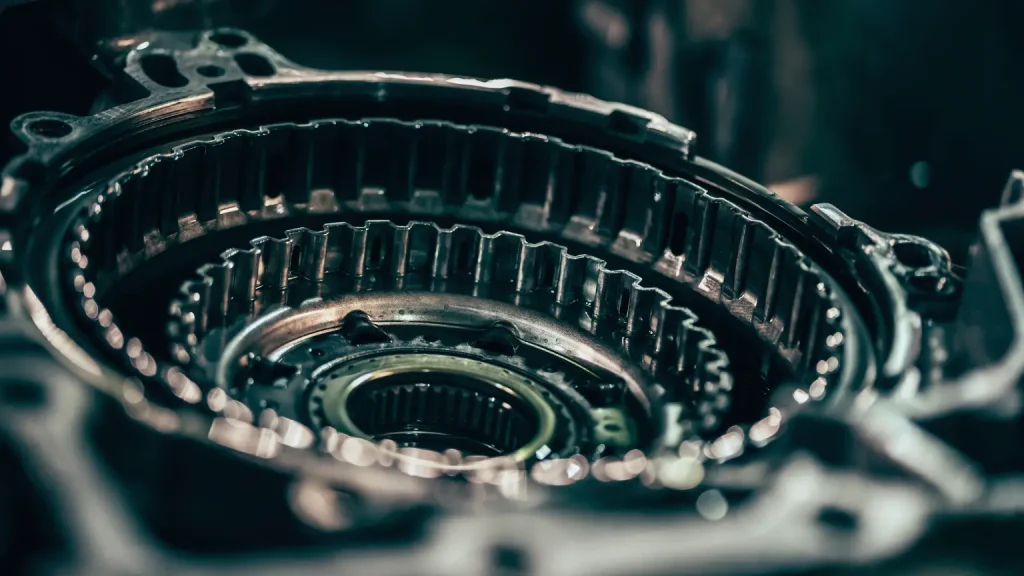
Pros and Cons of CVTs
Limitations of CVTs
CVTs also face certain limitations and skepticism. Some drivers may notice a 'rubber band' effect, where the engine noise increases disproportionately with speed, giving the transmission the feeling of straining. Additionally, earlier models of CVTs were criticized for their durability and performance under high stress, which has led to misconceptions about their reliability.
Factors to Consider
Deciding whether a CVT is the right choice depends on various factors, including driving style, performance preferences, and value for efficiency. Drivers who prioritize fuel economy and comfort may find CVTs more appealing. At the same time, those who enjoy a sporty driving experience might prefer the tactile feedback of gear shifts offered by other types of transmissions. Understanding the strengths and limitations of CVTs can help potential buyers make informed decisions tailored to their specific needs and driving habits.
CVT Maintenance and Reliability
Common Issues with CVTs
Despite their benefits, CVTs can encounter specific issues, such as belt slippage or premature wear, particularly in older or high-mileage vehicles. These problems may manifest as a loss of acceleration or a whining noise from the transmission. Addressing these issues promptly is crucial and typically involves inspecting the CVT fluid for debris or degradation, which can indicate internal wear.
Transmission Maintenance Tips
First and foremost is the use of CVT-specific fluid, which has unique properties necessary for the proper functioning of the belt and pulley system. It's also crucial to adhere to the manufacturer's recommended service intervals for fluid changes to prevent degradation of the transmission components. Regular checks for leaks and listening for unusual noises can also help catch issues before they become severe.
Finding a Skilled Mechanic for CVT Repairs
Locating a skilled mechanic who specializes in CVT repairs is crucial, as these transmissions require specific knowledge and experience for effective servicing. Here’s a concise guide to ensure you choose the right professional:
- Specialization and Experience – When searching for a professional, prioritize those who specialize in CVT repairs or work at a shop with extensive experience handling continuously variable transmissions. Since CVTs require precise calibration and unique servicing techniques, an inexperienced mechanic may struggle with proper diagnosis and repairs. Experience is particularly important for certain brands, as manufacturers implement different CVT designs—for instance, Nissan’s Xtronic CVT differs from Honda’s Earth Dreams CVT. Ask potential mechanics about their experience with your vehicle’s specific CVT system and whether they have completed repairs on similar models.
- Modern Diagnostic Tools – Unlike traditional transmissions, which rely mostly on mechanical components, CVTs are heavily dependent on electronic controls and computer software. Because of this, diagnosing a CVT issue requires advanced tools that can interface with a vehicle’s transmission control module (TCM). The best repair shops invest in factory-grade diagnostic scanners capable of reading real-time transmission data and error codes specific to CVTs. These tools help identify problems such as overheating, belt slippage, or software calibration errors.
- References and Reviews – Checking online reviews on platforms such as Google, Yelp, or automotive forums can provide insights into other CVT owners’ experiences with a specific repair shop. Look for recurring positive feedback regarding successful CVT reliability in vehicles, accurate diagnostics, and fair pricing. In addition to online reviews, word-of-mouth recommendations from other vehicle owners can be just as valuable. Ask friends, family, or online car communities for referrals to trustworthy CVT specialists if possible. A mechanic with a strong reputation is more likely to provide quality service and ensure that repairs are done correctly. Be wary of repair shops with frequent complaints about misdiagnoses or repeat issues, as these may indicate a lack of CVT expertise.
- Warranty and Support – A good warranty provides peace of mind that the repair was performed correctly and that any related issues will be addressed without extra expenses. Most reputable mechanics offer warranties covering parts and labor for a specified period, typically ranging from 6 months to a year. A warranty also indicates that the shop is confident in the quality of its work and willing to stand behind it. Before authorizing any repairs, ask about the shop’s warranty policy and what it covers. Check if the shop provides post-repair support, such as transmission fluid monitoring or recalibration services.
You can confidently choose a professional who will provide high-quality service by prioritizing specialization, certifications, diagnostic capabilities, customer reviews, and warranty offerings. Given the complexity of continuously variable transmission maintenance, investing time in finding a skilled mechanic for transmissions can prevent costly mistakes and keep your vehicle running smoothly for years to come.

The answer to the question of are CVTs good for long-term use? is promising as they are set to play a critical role in the transition to more sustainable driving technologies. Their ability to enhance fuel efficiency and reduce emissions makes them particularly well-suited to hybrid and electric vehicles, which are becoming increasingly prevalent in efforts to combat climate change.
Follow a maintenance program
Ante gravida id aenean quis egestas risus nam amet nullam leo diam diam aliquam eu eu malesuada arcu rhoncus suspendisse nulla mattis ut amet sagittis in justo egestas.

search for a trusted mechanic
Lorem ipsum dolor sit amet, consectetur adipiscing elit lobortis arcu enim urna adipiscing praesent velit viverra sit semper lorem eu cursus vel hendrerit elementum morbi curabitur etiam nibh justo, lorem aliquet donec sed sit mi dignissim at ante massa mattis.
- Neque sodales ut etiam sit amet nisl purus non tellus orci ac auctor
- Adipiscing elit ut aliquam purus sit amet viverra suspendisse potent
- Mauris commodo quis imperdiet massa tincidunt nunc pulvinar
- Excepteur sint occaecat cupidatat non proident sunt in culpa qui officia
Check the air pressure in your tires
Vitae congue eu consequat ac felis placerat vestibulum lectus mauris ultrices cursus sit amet dictum sit amet justo donec enim diam porttitor lacus luctus accumsan tortor posuere praesent tristique magna sit amet purus gravida quis blandit turpis.
Review your suspension frequently
At risus viverra adipiscing at in tellus integer feugiat nisl pretium fusce id velit ut tortor sagittis orci a scelerisque purus semper eget at lectus urna duis convallis. porta nibh venenatis cras sed felis eget neque laoreet suspendisse interdum consectetur libero id faucibus nisl donec pretium vulputate sapien nec sagittis aliquam nunc lobortis mattis aliquam faucibus purus in.
- Neque sodales ut etiam sit amet nisl purus non tellus orci ac auctor
- Adipiscing elit ut aliquam purus sit amet viverra suspendisse potent
- Mauris commodo quis imperdiet massa tincidunt nunc pulvinar
- Excepteur sint occaecat cupidatat non proident sunt in culpa qui officia
Service your vehicle as regularly as posible
At risus viverra adipiscing at in tellus integer feugiat nisl pretium fusce id velit ut tortor sagittis orci a scelerisque purus semper eget at lectus urna duis convallis. porta nibh venenatis cras sed felis eget neque laoreet suspendisse interdum consectetur libero id faucibus nisl donec pretium vulputate sapien nec sagittis aliquam nunc lobortis mattis aliquam faucibus purus in.
“Nisi quis eleifend quam adipiscing vitae aliquet bibendum enim facilisis gravida neque velit euismod in pellentesque”
Conclusion
Eget lorem dolor sed viverra ipsum nunc aliquet bibendum felis donec et odio pellentesque diam volutpat commodo sed egestas aliquam sem fringilla ut morbi tincidunt augue interdum velit euismod eu tincidunt tortor aliquam nulla facilisi aenean sed adipiscing diam donec adipiscing ut lectus arcu bibendum at varius vel pharetra nibh venenatis cras sed felis eget.

